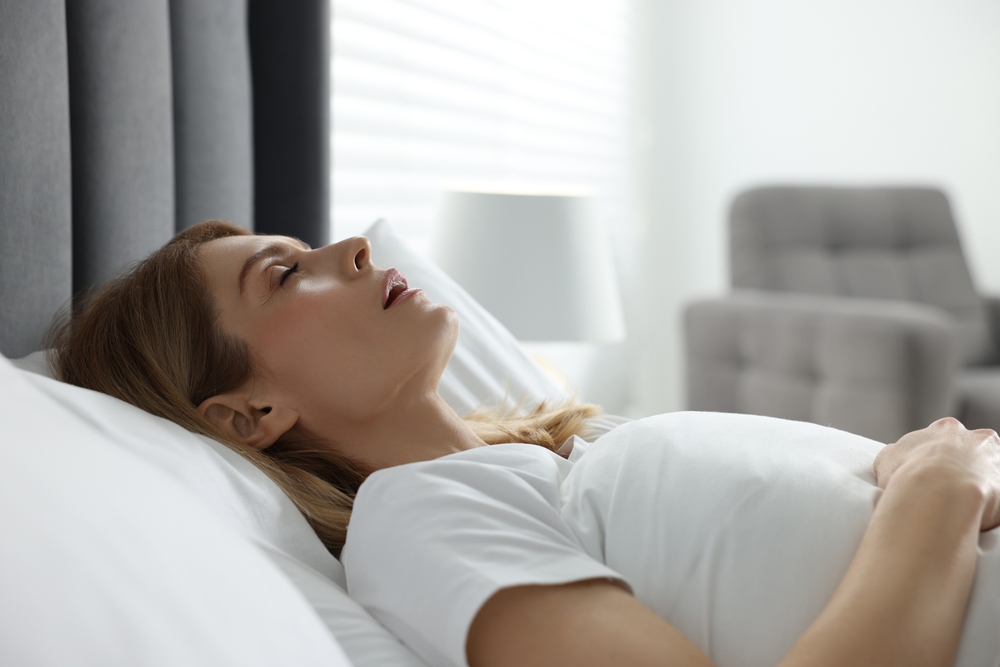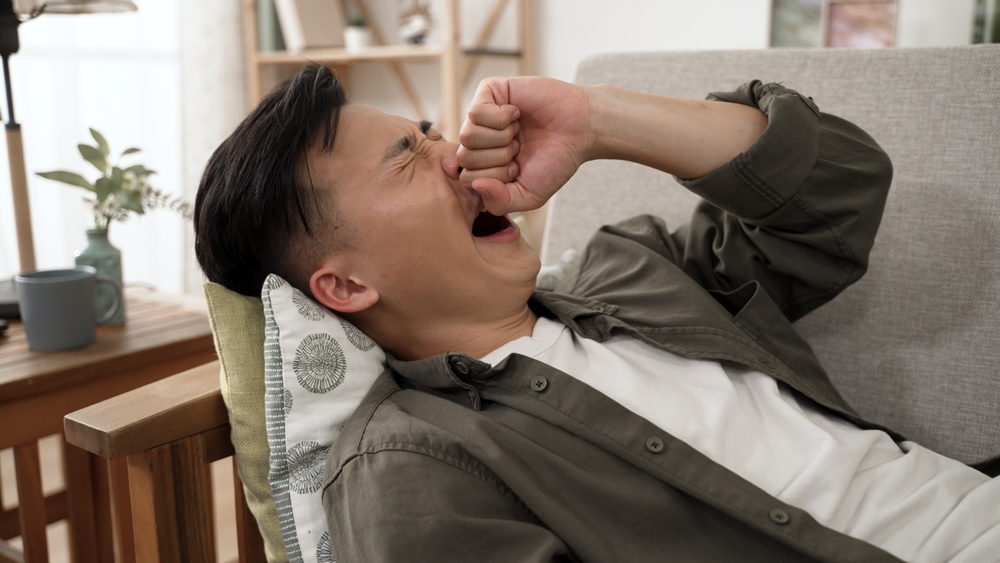Posted by: Maryland ENT in News
Do you experience excessive daytime sleepiness frequently? Do you often have unexplained sleep disturbances that leave you tired?
You may have upper airway resistance syndrome (UARS). Upper airway resistance syndrome can be confused with sleep apnea, but they’re not the same thing.
Keep reading to discover why, if it’s not sleep apnea, it could be upper airway resistance syndrome.
What is Upper Airway Resistance Syndrome?

Upper airway resistance syndrome occurs when the soft tissue in the throat relaxes and narrows your airway, causing resistance and making it more difficult to breathe in your sleep. Your brain senses the increased effort required to breathe to get enough air.
As a result, it wakes you up momentarily to restore normal breathing, disrupting your sleep. The subtle sleep disturbance is known as an arousal.
You likely won’t remember briefly waking up multiple times throughout the night. However, repeated interruptions disrupt deep restorative sleep, which is essential for optimal health and your overall well-being.
The arousals are called respiratory effort-related arousals (RERAs). Effort-related arousals are obstructive events that don’t meet obstructive sleep apnea (OSA) criteria but still wake you up from sleep.
Although upper airway resistance syndrome is quite similar to obstructive sleep apnea, it’s less severe. Upper airway resistance syndrome is a condition usually between snoring and obstructive sleep apnea regarding its clinical impact.
What are the Causes and Risk Factors of Upper Airway Resistance Syndrome?
Blockages in the upper airway can cause upper airway resistance syndrome. This can be due to a narrow upper airway or an oversized tongue, uvula, or adenoids.
Certain factors can also increase your risk of developing upper airway resistance syndrome, including:
- Weight gain
- Nasal polyps
- Nasal congestion
- Swollen turbinates
- A deviated septum
- Crowded and small jaws
What are the Symptoms of Upper Airway Resistance Syndrome?
Upper airway resistance syndrome symptoms are similar to sleep apnea symptoms. They include:

- Loud snoring
- Memory issues
- Persistent fatigue
- Daytime sleepiness
- Poor or disturbed sleep
What’s the Difference Between Upper Airway Resistance Syndrome and Sleep Apnea?
The main differences between upper airway resistance syndrome and sleep apnea include:
Severity of Symptoms
While upper airway resistance syndrome symptoms are similar to those of sleep apnea, they’re usually less severe.
Breathing
Upper airway resistance syndrome typically doesn’t have pauses in breathing (apneas) or reduction in breathing (hypopneas). If these episodes do occur, they’re generally mild. With sleep apnea, breathing stops frequently throughout the night.
Weight
Those with sleep apnea are often obese or overweight. In contrast, people with upper airway resistance syndrome are usually of average weight and are usually not overweight.
Progression
Without timely treatment, upper airway resistance syndrome can progress into sleep apnea.
What Happens if Upper Airway Resistance Syndrome is Left Untreated?
Left untreated, upper airway resistance syndrome can lead to:
- Depression
- Weight gain
- Heart disease
- Chronic insomnia
- Cognitive decline
- High blood pressure
- Irritable bowel syndrome
- Bruxism (jaw clenching and teeth grinding)
- Acid reflux or gastroesophageal reflux disease (GERD)
- Parasomnias such as sleep talking, sleepwalking, or sleep paralysis
How is Upper Airway Resistance Syndrome Diagnosed?
If you have upper airway resistance syndrome symptoms, your ENT specialist at Maryland ENT will order a sleep study. For this test, several devices and sensors will monitor your vitals and behavior and record your:
- Breathing
- Heart rate
- Brain waves
- Blood oxygen levels
- Leg and eye movements
If you have upper airway resistance syndrome, it will diagnose the condition and help rule out sleep apnea.
How is Upper Airway Resistance Syndrome Treated?
A lot of the treatments that work for sleep apnea also work for upper airway resistance syndrome. After an accurate diagnosis, your treatment plan can include:
CPAP Therapy
A continuous positive airway pressure (CPAP) machine delivers steady positive air pressure into the nose, mouth, or both. The continuous stream of air pressure to your airway keeps it open while you sleep, enabling regular breathing.
This prevents snoring and upper airway resistance syndrome. For the treatment to succeed, you must use your CPAP machine any time you sleep or nap, including when traveling. However, many patients with upper airway resistance syndrome find it challenging to tolerate CPAP machines, meaning this is not the first line of treatment used to treat the condition.
Oral Appliances
Patients with upper airway resistance syndrome are more commonly treated using oral appliances as the first treatment. Oral appliances are devices worn in the mouth during sleep.
They work by repositioning the lower jaw or tongue forward. Oral appliances are custom-fit for each patient and prevent soft tissue in the airway from collapsing, restoring breathing.
When used appropriately, oral appliances can relieve upper airway resistance syndrome considerably and minimize sleep disturbances.
Surgery
Your ENT specialist may suggest surgery to address anatomical abnormalities contributing to upper airway resistance syndrome. Surgery is often considered when conservative treatments are not tolerated or are unsuccessful in eliminating its symptoms.
It focuses on various parts of the body that can prevent you from breathing easily during sleep, including the tongue, nose, soft tissue in the back of the mouth and throat, and the bones of the face, jaw, and neck.
Surgical procedures aim to remove obstructions or enlarge the airway to improve airflow while you sleep and alleviate symptoms. The surgical approach used will be based on your specific needs.
Your ENT specialist will perform a detailed upper airway assessment to decide which surgical procedure is most effective. This can include:
Uvulopalatopharyngoplasty (UPPP)
Uvulopalatopharyngoplasty is a surgical procedure that widens your airway by removing excess tissue in the throat. It removes tissue blocking your airway to allow more airflow so you can breathe easily.
Your ENT specialist may trim part or all of the soft palate and uvula. If they remain, they might also remove extra tissue in the throat, such as adenoids and tonsils.
If you have a large tongue, your ENT specialist at Maryland ENT may suggest removing part of it in a separate procedure during uvulopalatopharyngoplasty.
Maxillomandibular Advancement (MMA)
Maxillomandibular advancement involves repositioning the lower and upper jaw forward. This enlarges the upper airway and reduces obstruction while you sleep.
Nasal Surgery
These include procedures that eliminate nasal obstruction, such as:
- Septoplasty to straighten a deviated or crooked septum
- Turbinate reduction to reduce or remove large turbinates and polyps
You Deserve Restful, Restorative Sleep

Upper airway resistance syndrome treatment at Maryland ENT can help you get a good night’s sleep and wake up more refreshed every day. Our trusted ENT specialists will provide an accurate diagnosis and create a treatment plan to effectively manage upper airway resistance syndrome.
Do you suspect you have upper airway resistance syndrome? Request your appointment today at Maryland ENT in Lutherville and Baltimore, MD, to get on the path to better sleep and health.



